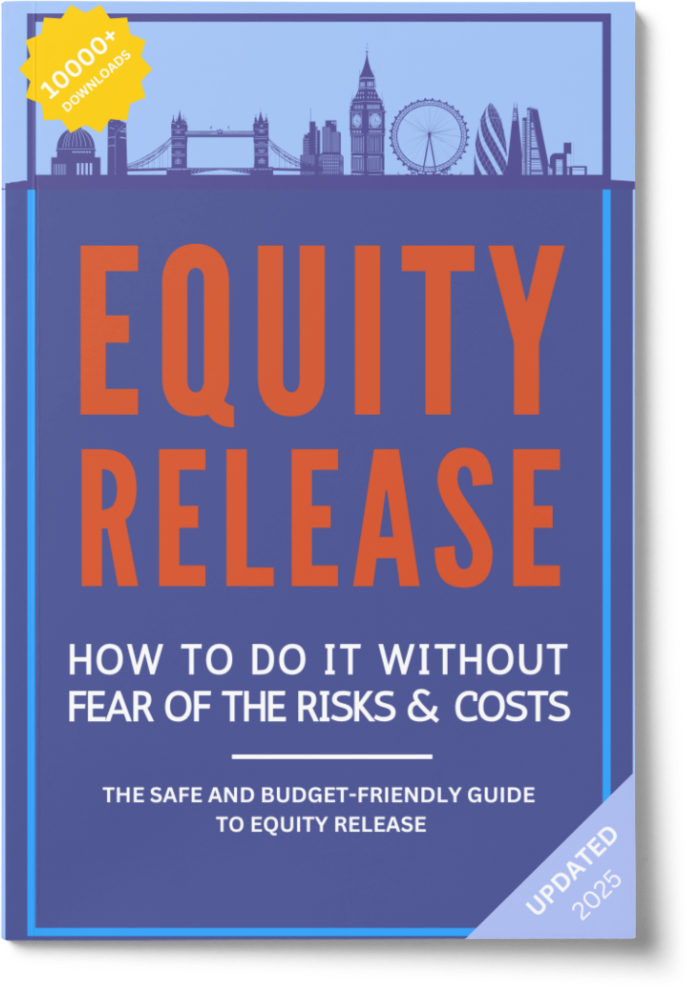Equity Release Partial Repayments in 2025: How It Works

SovereignBoss adheres to a stringent code of editorial guidelines, but some articles may feature partner references. Here is an explanation for how we make money.
- The rules typically allow you to repay up to a certain percentage of the initial loan amount each year without facing early repayment charges.
- Most plans allow such repayments, usually up to 10% of the original loan value annually, offering a way to manage the debt more flexibly.
- Many schemes provide the flexibility to make these repayments, aiding in loan management.
- This option works by allowing you to make regular or one-off payments towards the loan, thereby reducing its overall size and the interest accumulated.
- The implications include potentially reducing the accrued interest and overall debt, but it's crucial to understand any possible charges for early payments.
What are equity release partial repayments and what is all the surrounding noise?
The Equity Release Council has made an exciting announcement that has left the industry excited.
Did you think equity release is something that you are tied into for life?
Well, guaranteed partial repayments may change this perception.
In This Article, You Will Discover:
Without a doubt, equity release can be rather daunting without the necessary guidance. Fortunately, we have taken away the guesswork about partial repayments for you.
Therefore...
The Equity Release Council’s Announcement
On 31st January 2022, the Equity Release Council released a report1 stating that, in the near future, lenders are required to offer borrowers the opportunity to make annual partial repayments on all lifetime mortgage plans.
The news was welcomed by prospective borrowers on the 30th anniversary of the Equity Release Council, as partial repayments could be the key to mitigating high equity release costs.
As of 28th March 2022, all lifetime mortgage lenders under the guidance of the Council will need to offer penalty-free partial repayments to their borrowers.
Is Interest Charged on All Equity Release Types?
No, homeowners will only pay interest on the most popular type of equity release, a lifetime mortgage.
With a home reversion scheme, the lender will purchase your property below market value and benefit from the full value when your property is sold.
The Terms and Conditions of Equity Release and Partial Repayments
The terms and conditions of equity release and partial repayments include being able to pay up to 10% of the loan every year.
Accordingly...
- Borrowers can pay off up to 10% of the loan annually, penalty-free.
- Some leading lenders are implementing up to 40% repayments annually, sometimes dependent on how long the loan has been in place.
- Homeowners can also pay back the monthly interest.
- You can stop and start making payments at any time.
- There are still no affordability checks, as the loan is secured against your estate’s value.
What Are the Benefits of Partial Repayments?
The benefits of partial repayments on equity release include the fact that you can drastically reduce the overall value of your loan.
Further benefits include:
- You will increase the overall value of your inheritance.
- You can repay your equity release loan within ten years.
- You can stop the interest from compounding.
- You will not risk foreclosure2 if you can no longer afford the payments.
- Your family can still keep your beloved family home if you pass away once the loan is repaid.
- You may have more equity in your home for future use, should you opt for regular partial repayments.
Can I Repay My Equity Release Loan in One Transaction?
You can repay your equity release loan in one transaction, but you may incur equity release fees known as early repayment charges.
These can be anything from 5% of the total loan value and can reduce to 3% after six to eight years. This is for indicative purposes only.
It is worth doing some research, as many lenders will remove early repayment charges altogether once eight years have passed.
Finding the Means to Repay Your Equity Release Loan in Retirement
Without a stable income, paying off an equity release loan may be a challenge for many retirees, especially because it may impact your access to means-tested benefits.
However, there are ways to pay off your loan, or at least the monthly interest.
Some inspiration:
- Reduce costs – After all, the monthly interest costs are likely as low as what you pay for a TV license.
- Sell assets – You may want to consider selling some of your unused furniture to pay off some of the loan.
- Use the loan itself – It is possible to use some of the equity you unlock to repay the monthly interest.
- Use your private pension – You could add the monthly repayments to your budget.
Before using any of the above means to repay your equity release loan, you MUST consult the financial advisor that helped you unlock equity originally.
Why Are Guaranteed Partial Repayments a Game Changer?
Guaranteed partial repayments on all lifetime mortgage products are a huge change for the industry, as homeowners now have the opportunity to repay their loan within ten years, rebuilding the equity in their property.
Partial repayments also mean that homeowners can drastically reduce the cost of their equity release loan.
Lifetime mortgages work with compound interest. But, if you are paying off the monthly interest, there is nothing to compound.
An example:
If you unlock £50,000 through a lifetime mortgage and your monthly interest is 3.5%, you will pay £145.83* each month to avoid compound interest.
If you are also paying £5,000 in annual capital (10% of the loan), you will only pay a total of £67,499.60 on the £50,000* loan.
However, the picture is very different if you do not repay your interest.
The interest will compound over time, and you will pay much more for your loan.
In the same ten years, your loan and compound interest would amount to £70,917*, and that is just the beginning.
The interest will continue to compound until you pass away or enter long-term care.
In short, guaranteed partial repayments can save homeowners a considerable amount.
You should consider paying back at least the monthly interest if you have the means to do so.
* These figures are for indicative purposes only.
Are Guaranteed Partial Repayments Only Available for New Equity Release Borrowers?
Yes, guaranteed partial repayments are only available for new lifetime mortgage borrowers who unlocked plans after 31st March 2022.
Some existing plans already have these features, while others may not.
Should I Review My Lifetime Mortgage Plan to Gain Access to Partial Repayments?
Yes, reviewing your lifetime mortgage plan is a great way to obtain access to partial repayments.
If your current plan does not have this feature, you may want to consider switching plans.
Just be sure that your new plan comes with competitive interest rates.
You see, interest rates were at an all-time low in March 20213, so if you unlocked a plan back then, you may not find equivalent interest rates in Apr 2025.
The most recent equity release rates can be seen here.*
Your best option is to talk with your financial advisor or broker, who can help you calculate the outcome of your various options.
*While we regularly review rates, these may have changed since our last update.
How Long Will It Take To Pay Off My Equity Release Mortgage?
If you make monthly interest repayments and pay 10% of the loan annually, you could repay your equity release loan within ten years.
So, if you unlock cash at 55, you could fully replenish the equity in your home at 65, and even opt for a new loan if you desire.
With some lenders offering up to 40% in repayments, that is more like three years. It is best to seek a tailored response to this from your lender.
Common Questions
What Are the Rules for Making Partial Repayments on Equity Release?
Can I Repay My Equity Release Loan in Partial Payments?
Does Equity Release Allow for Partial Repayments?
How Do Partial Repayments Work in an Equity Release Scheme?
What Are the Implications of Making Partial Repayments on My Equity Release?
In Conclusion
As we emerge from a global pandemic, the equity release industry appears to be flourishing.
Now, homeowners over 55 have more options to help them financially during a tough economic time.
The guarantee of partial repayments means homeowners have the opportunity to repay their lifetime mortgage and save money.
Plus, if they have the means to, they can keep their estate intact.
The new regulations around equity release partial repayments are great news for consumers!
WAIT! Before You Start…
Equity Release Calculator
How Much Equity Can You Release?
Spotted a Mistake? Let us know here.




